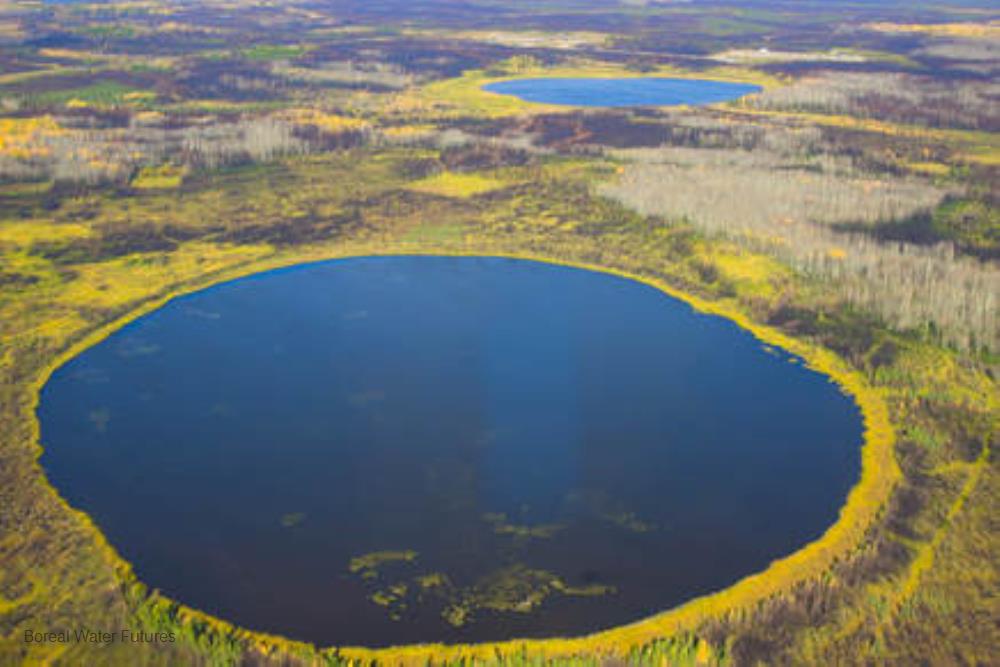
Related items loading ...
Section 1: Publication
Publication Type
Conference Presentation
Authorship
Jardine, T.D., and Carriere, S.
Title
Two-eyed seeing for environmental flows in the Saskatchewan River Delta.
Year
2023
Publication Outlet
Environmental Flows International Learning Exchange - Environment and Climate Change Canada, August 4, online.
DOI
ISBN
ISSN
Citation
Jardine, T.D., and Carriere, S. (2023) Two-eyed seeing for environmental flows in the Saskatchewan River Delta. Environmental Flows International Learning Exchange - Environment and Climate Change Canada, August 4, online.
Abstract
Glacierized mountain headwaters act as water towers, providing critical water resources to downstream environments when other sources are unavailable. These headwaters are currently witnessing a shift in their coupled hydrological and glaciological systems. This shift is reducing glacier volume, extent and elevation range, in addition to changing the snow dynamics across both glacierized and non-glacierized areas. These interconnected changes occur simultaneously, driven by complex physical feedbacks, and they impact streamflow generation processes. To properly characterize this transition period and predict future hydrological behaviour in these glacierized basins, physically based glacio-hydrological models representing the full range of both glacier and basin hydrological processes are needed. However, obtaining the data to apply such modelling approaches is complicated by the scarce data availability in mountain regions. New approaches to collect the required data and parametrize these complex processes need to be developed in parallel with increased process representations in glacio-hydrological models. This thesis aims to assess the impact of future climate and glacier change on glacierized basin hydrological processes and streamflow generation. Its specific objectives are to (1) develop and apply innovative approaches to characterize hydro-glaciological processes in glacierized basins, (2) diagnose hydrological and glaciological processes resulting in streamflow generation and variability and (3) assess the coupled impacts of climate and landscape change on the hydrological processes and streamflow generation in a glacierized basin. Field-based investigations of streamflow measurement uncertainty, sub-debris melt and surface energy balance were conducted and used to guide new and revised algorithms for the Cold Region Hydrological Modelling (CRHM) platform. Using CRHM with the newly added process representations for katabatic wind turbulent transfer, hourly energy balance and sub-debris melt, a physically based glacio-hydrological model was developed and tested in the Peyto Glacier Research Basin, a 53% glacierized headwater basin (as of 2013) located in the Canadian Rockies. This glacio-hydrological model was used to investigate the recent past and current (1990-2020) hydrology of the basin using in-situ weather observations. Over the 32 years, strong inter-annual variability in the meteorological forcings caused highly variable streamflow in this cold alpine basin. Snowmelt always provided the largest fraction of annual streamflow (44 to 89%), with lower snowmelt contributions occurring in high streamflow years. Ice melt provided between 10 to 45% of total streamflow, with a higher contribution associated with high flow years. Both rainfall-runoff and firn melt contributed less than 13% of annual streamflow. Years with high streamflow were on average 1.43˚C warmer than low streamflow years, and high streamflow years had lower winter snow accumulation, earlier snowmelt and higher summer rain than years with low streamflow. The glacier hydrology of current (2000-2015) and future periods (2085-2100) was compared, using bias-corrected, dynamically downscaled, convection-permitting high-resolution atmospheric model outputs. The simulations show that the end-of-century increase in precipitation, mainly expressed as an increase in rainfall at the expense of snowfall, will nearly compensate for the decreased ice melt associated with almost complete deglaciation, resulting in a decrease of 7% in annual streamflow. However, the timing of streamflow will advance substantially, with the timing of peak flow shifting from July to June, and August streamflow dropping by 68%. To examine the sensitivity of future hydrology to possible future post-glacial landscapes, the end-of-century simulations were run under a range of boundary conditions and were most sensitive to initial ice volume and surface water storage. This research provides better modelling techniques to represent the complex systems of headwater glacierized basins, as well as robust estimates of future glacier contributions to streamflow in reference basins of the Canadian Rockies and should be useful for water availability studies and water management mitigation strategies.
Plain Language Summary


 GWFNet
GWFNet Master
Master Data
Data Research
Research Map
Map
 Advanced
Advanced Tools
Tools
 . . .
. . .
 Metadata Editor
Metadata Editor
 Record List
Record List
 Alias List Editor
Alias List Editor
 Legacy sites
Legacy sites